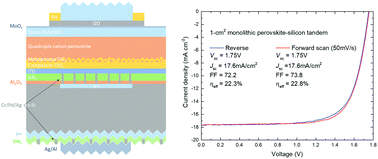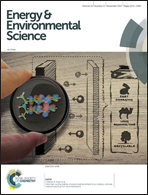Monolithic perovskite/silicon-homojunction tandem solar cell with over 22% efficiency†
Abstract
Crystalline silicon (c-Si) solar cells featuring a high-temperature processed homojunction have dominated the photovoltaic industry for decades, with a global market share of around 93%. Integrating commercially available crystalline silicon solar cells with high-efficiency perovskite solar cells is a viable pathway to increase the power conversion efficiency, and hence achieve low levelized electricity costs for the photovoltaic systems. However, the fabrication process for this type of cell is challenging due to the many, and often conflicting, material processing requirements and limitations. Here, we present an innovative design for a monolithic perovskite/silicon tandem solar cell, featuring a mesoscopic perovskite top subcell and a high-temperature tolerant homojunction c-Si bottom subcell. The improved temperature tolerance of the c-Si bottom cell permits significantly increased flexibility in the design and fabrication of the perovskite cell. We demonstrate an efficiency of 22.5% (steady-state) and a Voc of 1.75 V on a 1 cm2 cell. The method developed in this work opens up new possibilities in designing, fabricating and commercialising low-cost high-efficiency perovskite/c-Si tandem solar cells.



 Please wait while we load your content...
Please wait while we load your content...